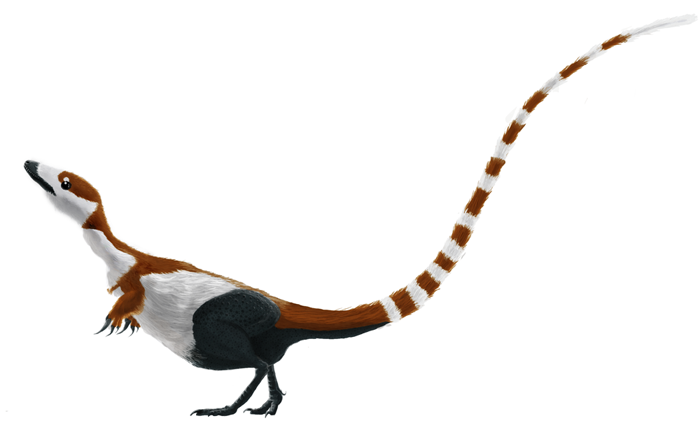 |
| Life restoration of the S. prima type specimen by M. Martyniuk |
Saturday, August 11, 2012
Did Sinosauropteryx Have "Protofeathers"?
Friday, August 10, 2012
The Strange Bird Dalianraptor cuhe
 |
| Type specimen of D. cuhe, originally posted by Andrea Cau |
D. cuhe has spent the last several years as a species in obscurity, even among most paleontology enthusiasts. I recall my first glimpse of the type specimen, wondering over the seemingly-complete remains of an "undescribed possible dromaeosauird" in a low-res photo posted online in the early '00s. I can remember saving the image to my reference folder, hoping that one day I'd be able to update the file name. It's a fascinating animal, but... is it real?
Wednesday, August 1, 2012
The Tail of Shanweiniao
 |
| Fossil tail feathers of S. cooperorum, from O'Connor et al., 2009. |
S. cooperorum itself is most well-known for its elaborate tail made up of six ribbon-like feathers. Those feathers overlapped at the base, and may have acted as an air brake for precise landings with the feet on small branches. It's possible that most other enantiornitheans, which lacked long feathery tails and also retained wing claws, landed by simply smacking clumsily into tree trunks or brush and grabbing on with all four limbs.
Subscribe to:
Comments (Atom)
